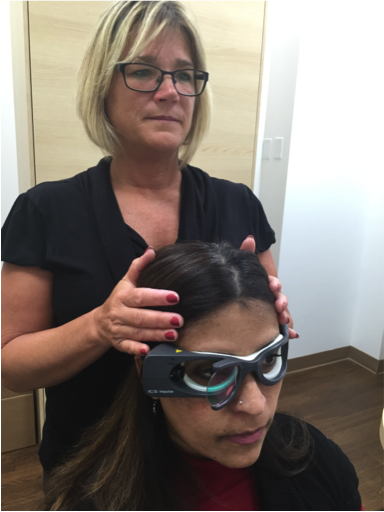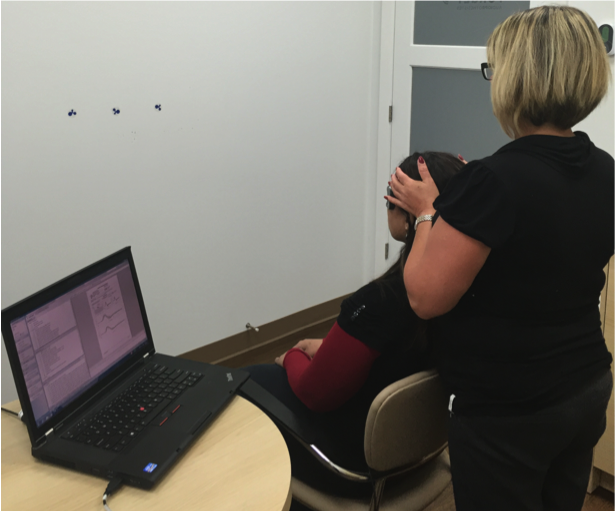Equilibrium and vertigo exam
VNG (Videonystagmography)
vHIT (video Head Impulse Test)
VEMP (Vestibular Evoked Myogenic Potential)
__________________________
vHIT (video Head Impulse Test)
Although the video Head Impulse Test (vHIT) does not give the impairment percentage of the horizontal canal from one side compared to the other side, it gives the opportunity to examine the 6 semicircular canals (horizontal, anterior and posterior). Up till now, there is no other test that gives such information. The vHIT allows doctors to identify if the semicircular canals are functioning normally or not.
During the examination, the patient fixes a point in front of him while the head is turned unexpectedly in the plan of the tested canal, by the examiner. Normally, to compensate, the eyes have the reflex to move in the opposite direction in order to keep the fixed point in the same position, stable on the retina. This is called the vestibulo-ocular reflex.


Using a camera, an infrared light and a software, the vestibulo-ocular reflex is recorded to detect any correction saccades at eyes level. An anomaly is detected when the eyes and head do not move at the same velocity. In other words, with an abrupt passive head movement, the eyes do not remain fixed on the point across but move with the movement of the head and come back later to fix at the point. This means the gain is pathological. The diagnosis and appropriate treatment is subsequently proposed to address the issue.
The Polyclinique Centre-Ville is proud to be one of the first in Canada to offer services in this field. The test is easy, does not last long, well tolerated by children, allows you and your ENT, to detect abnormalities in any of the 6 semicircular canals, remained undiagnosed before the appearance of vHIT.
